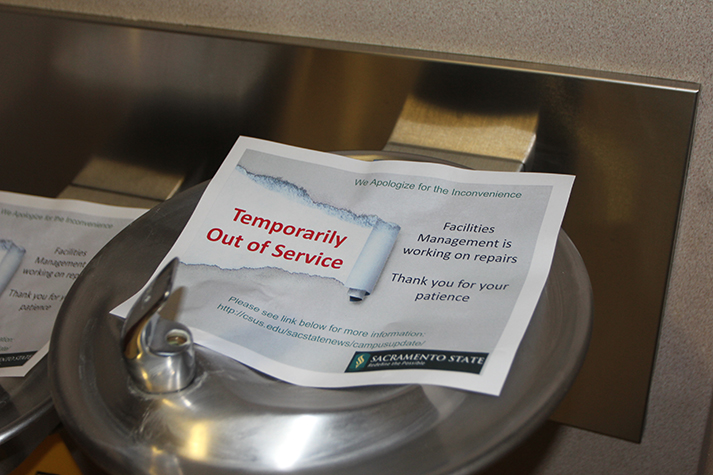Lead testing results put on hold
state hornet 2012
Sacramento State’s drinking water sources are currently being tested for lead contamination by consultant group CIH Services, and results are expected to be announced in May. (Photo by Kameron Schmid)
April 19, 2017
Results of the comprehensive testing of Sacramento State’s drinking water sources for lead contamination will come in May, not April, because of multiple factors, said an official involved in the testing process.
According to Steve Leland, the director of environmental health and safety, most of the testing is done, but results will not be released out until all testing is finalized and put together.
Some resampling also needs to be done. Of the “about 600” drinking water samples that have been taken so far, “36 or 37” came back with levels of lead contamination above 15 parts per billion, the EPA action level.
Per the protocol of the test, put together by hired consultant group California Industrial Hygiene Services, any source that the first sample is found to be over the 15 ppb level is retested. If it again is over 15 ppb, CIH will then test the pipes leading to the source.
“Once they exceed that 15, we leave the fountain off, the fountain is resampled, and then if it’s elevated again, we make a determination on what we’re going to do in that case, whether it’s going to be removal of the fountain altogether, filtration, or replacement of the fixture,” Leland said.
Additionally, Leland said it has taken some time to test all of the sources, as prior to all tests, a period of eight to 18 hours of inactivity at each source is required.
The test protocol and outline was detailed publicly before testing began, and called for 494 sources to be sampled, some of which were previously tested by a research group in January and found to have lead contamination, and some of which that have yet to be tested.
In the previous test, nearly 20 percent of 449 drinking water sources on campus were found to have lead contamination above 5 ppb, the Food and Drug Administration’s level of contamination allowed for bottled water.
At that time, those fountains were shut off out of “an abundance of caution,” as both Leland and Jill Parker, — interim senior director for risk management services and chief risk officer — have previously said.
Twenty-seven of the 449 sources had contamination levels above 15 ppb. Leland said that he was “mostly sure” that most of the now 36 or 37 sources that tested above 15 ppb were sources being retested from the January test.





























































































































